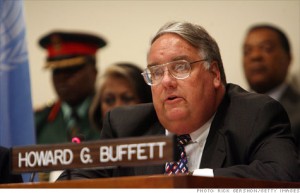Did anyone see the announcement by Warren Buffett before the holidays where he named his son, Howie, as his successor to run Berkshire Hathaway when he dies?
I didn’t think so. It was low key, as is much of of what Warren does.
Somehow, the richest man in America tells us who will be running his company and no one really seems to care that it will be his son. Tough choice, though, picking from anyone in the world — the greatest business minds of our generation who were lining up for a chance to run one of America’s greatest companies, or his son, the soybean farmer from Nebraska?
You see, succession isn’t as much a science as it’s an art.
It’s all about trust
Whatever. Buffett chose his son because, as Warren puts it:
Howard, or “Howie,” as he is known in the family, will serve as a “guardian” of the company’s “values”… Buffett said he worried that “somebody will be in charge of Berkshire that uses it as their own sandbox in some way,” and “having Howie there serves as an extra layer of protection.”
Trust. In the end, the greatest business mind of our generation, and possibly any generation, didn’t make an analytical decision, he made a decision with his heart. He choose someone he trusted would carry on his vision – not someone who would be out to turn Berkshire into something he or she would want to make it.
Succession is a funny thing that way, when you leave it up to the current person in charge to decide.

This is truly why most HR-based succession plans fail to hit the mark. CEOs/presidents/owners don’t want competency models and scorecards to determine who will be next in line – they want to use subjective data that we all steer them away from “who do I trust?” “who do I feel will carry on my vision?”and, “who do I feel will do most like me?”
A need for complete confidence
Your leaders want to ensure that your organization has a great pipeline of talent, some of which is capable of moving up a level or two, but they also want and need to know those individuals on a very personal level — a level where they have complete confidence in the decision they are making. This usually isn’t a part of our HR succession plans.
Don’t think this isn’t the case as you move down the ladder and you’re just replacing your next Director of IT, because you would be wrong. It really works at all levels. The next level or two up want to know that when they place someone in a position that they can trust that person won’t make them look like a fool. The only way you make that happen is if the person in the succession plan has a relationship one and two levels up – not a working relationship, but one that is beyond that.
So, go add that to your succession plan and see what happens!
“What? You want me to take Nick our lead developer to dinner, with our spouses!? Are you serious?” Yes, and we’ll even pay for the dinner and drinks. Then sit back and enjoy. Is it subjective? Yes. Does it work? Yes.
Tim Sackett will speak on What Your CEO Wished HR Would Do at the TLNT Transform conference in Austin, TX Feb. 26-28, 2012. Click here for more information on attending this event.
This was originally published on Tim Sackett’s blog, The Tim Sackett Project.
